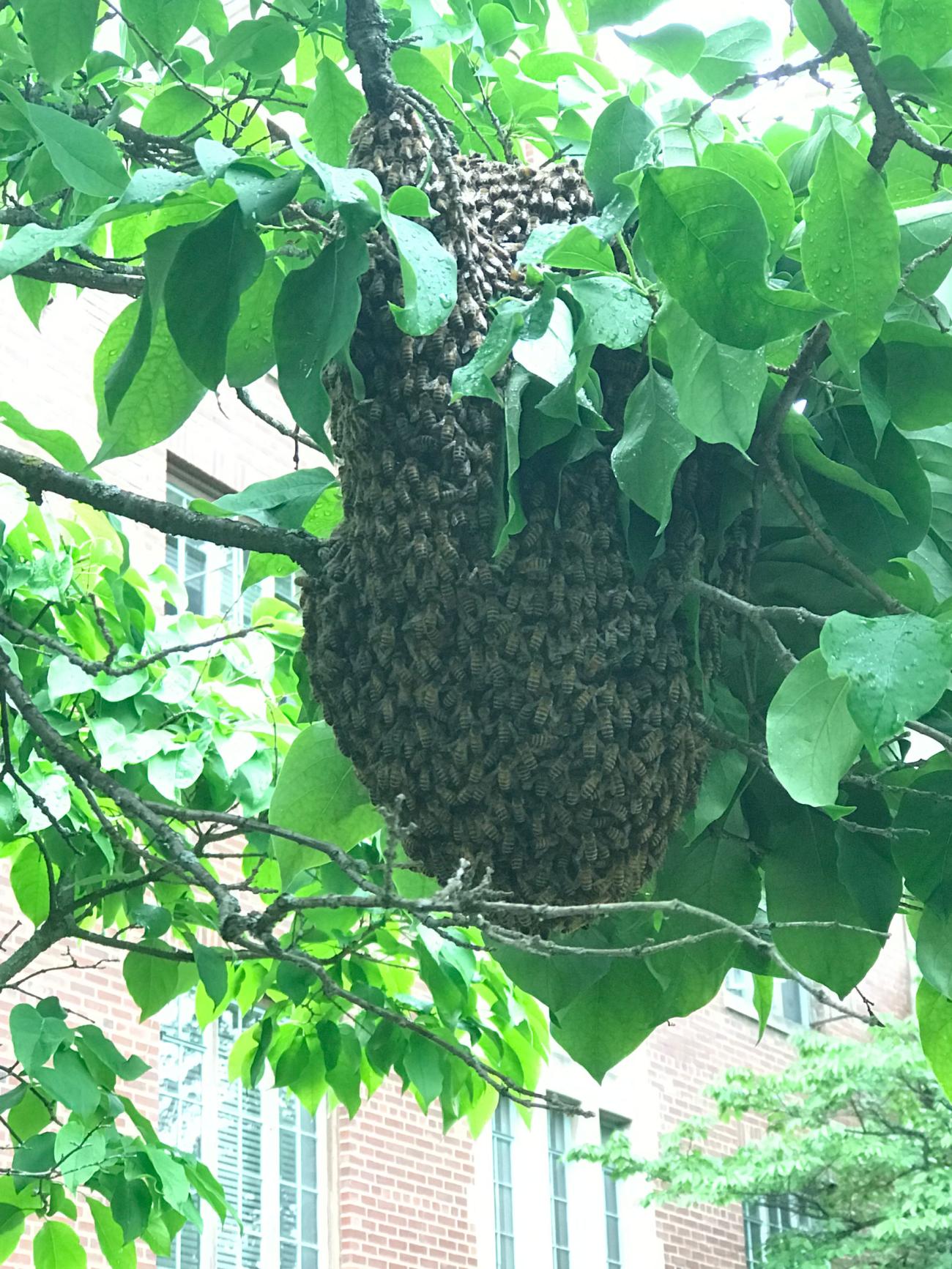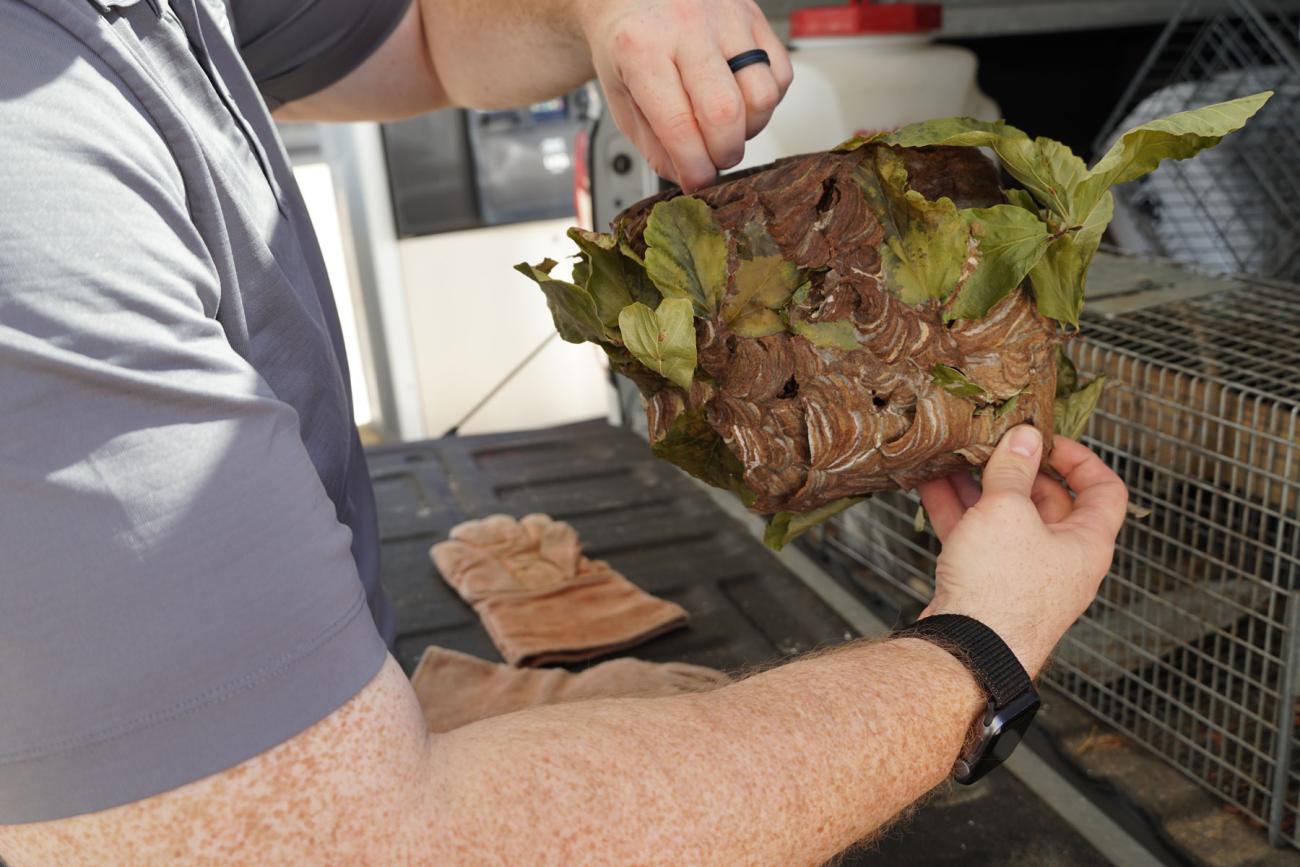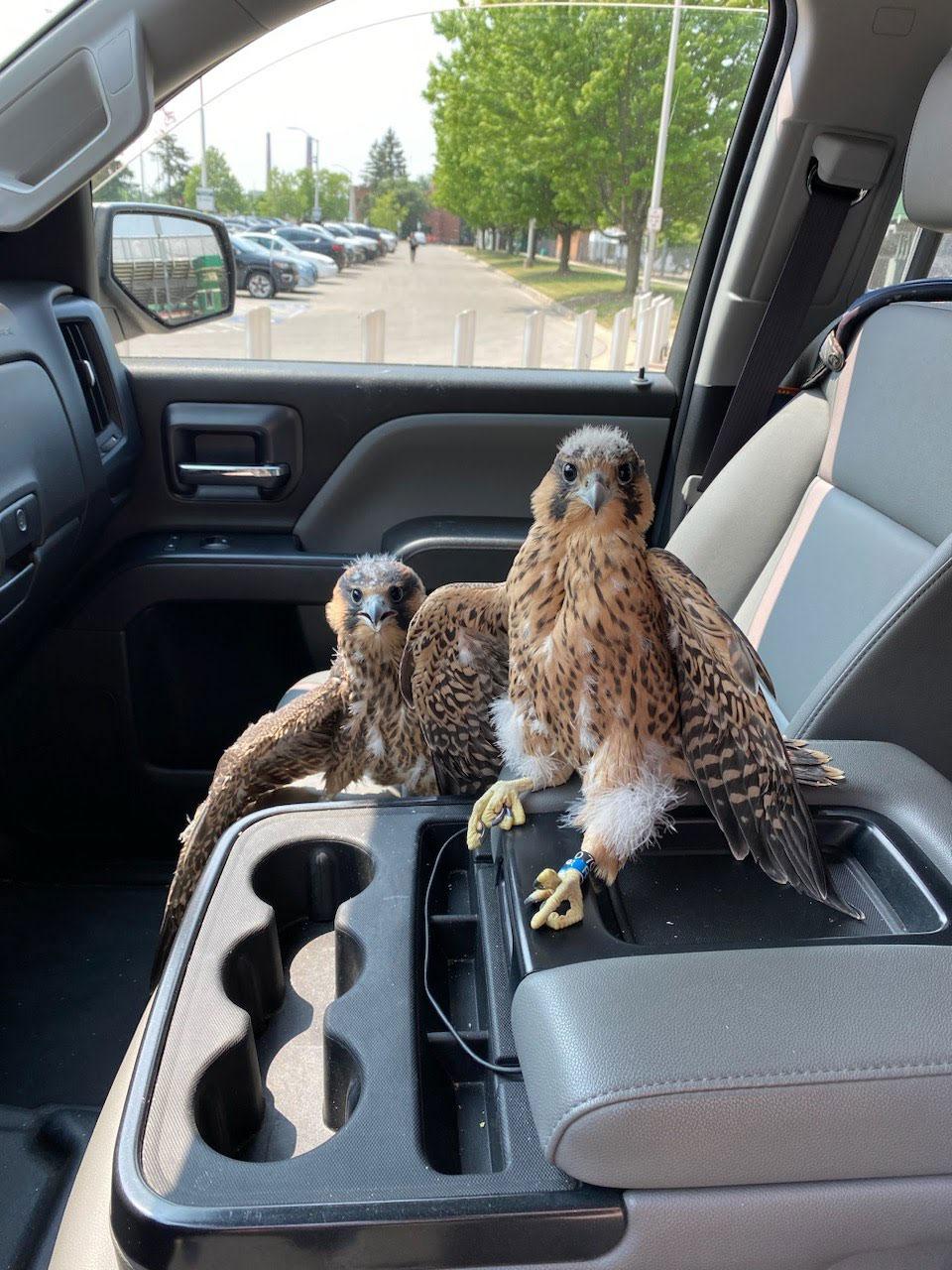Behind the Scenes @ MSU: Pest Control
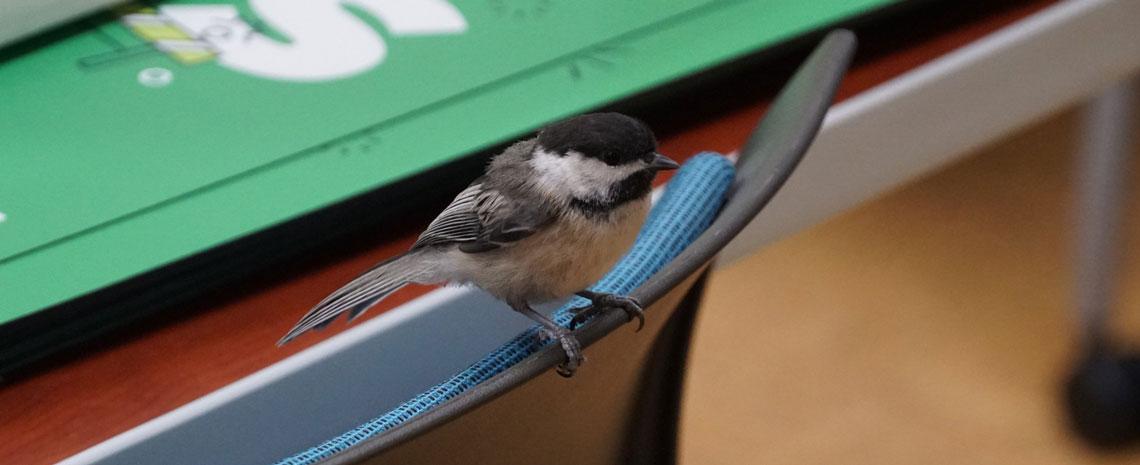
Danielle Fowler
September 15, 2023
Bats, stinging insects, mice: when wildlife makes its way into buildings and places occupied by people, they’re classified as pests. IPF’s Pest Control team has the knowledge and experience to keep the outside out and make sure campus spaces are usable and safe for faculty, students and staff.
IPF’s Jacob Barlow has worked in pest control for 12 years, six of them at MSU. The last job for today is taking care of a wasps’ nest at MSU’s fleet refueling station on Service Road.
In the back of his truck, Barlow has a protective suit and a long tool that puffs a special kind of diatomaceous earth into the nest. Next to that is a variety of tools and equipment so he's ready to respond to whatever call comes his way.
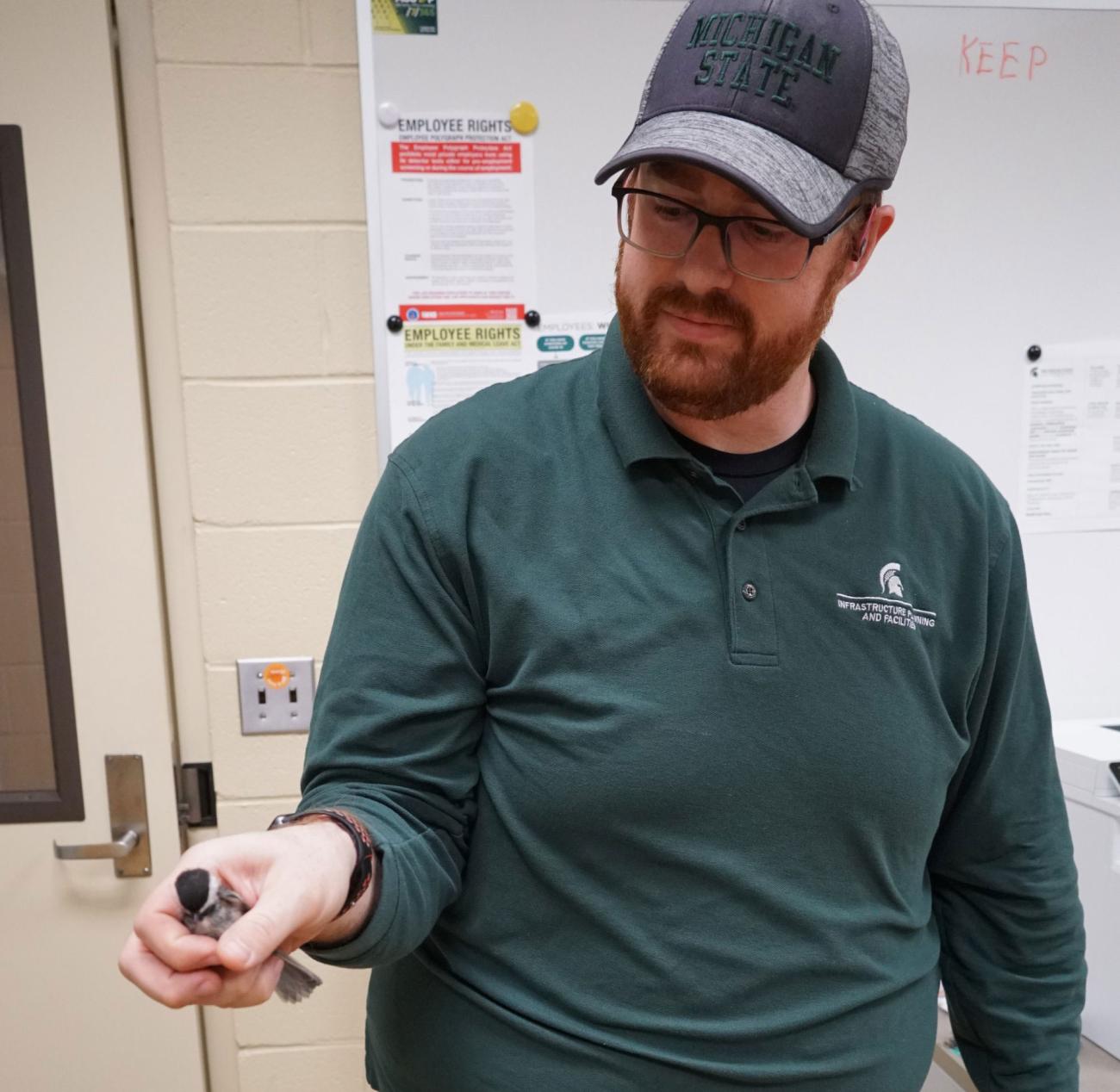
As Barlow dons the protective suit to treat the wasps’ nest, he describes what pest control looks like on campus.
“It’s a combination of trouble calls and routine inspections to stop problems before they start,” he says. “I probably catch about a hundred bats a year. The beginning of the fall semester is always busy because buildings that have been mostly empty are suddenly very active.”
The Pest Control team uses a comprehensive approach called Integrated Pest Management (IPM) that includes inspection, identification, and treatment to prevent and control pest infestations on our campus. As described by the USDA Office of Pest Management Policy, IPM uses biological, cultural, physical, and chemical tools in a way that minimizes economic, health, and environmental risks.
“We don’t use nearly as much pesticide as people think we do,” says Barlow. “It’s a last resort. Actually, the most effective thing we do is partnering with different trades or with academic departments.”
How do partnerships prevent pests?
“Let’s say we get a call for mice in an office space,” says Barlow. “We work with IPF carpenters to get areas as sealed as tight as possible. We can come in and set traps and put out bait. But if there are food sources available, they’ll just keep coming back, they have a great sense of smell so we work with the people in that office to stop the problem before it starts, starting with hard plastic containers to store food.”
Removing food and water sources, and harboring materials (places that pests could call home) is the best way to prevent pest problems.
Now fully suited up, Barlow walks to the building overhang where the wasps’ nest is. He raises the long tool and puffs clouds of diatomaceous earth into the nest.
“The wasps actually take the earth into the nest themselves,” says Barlow. “A spray is messy and only treats the outside of the nest, but with this the wasps do the work for you.”
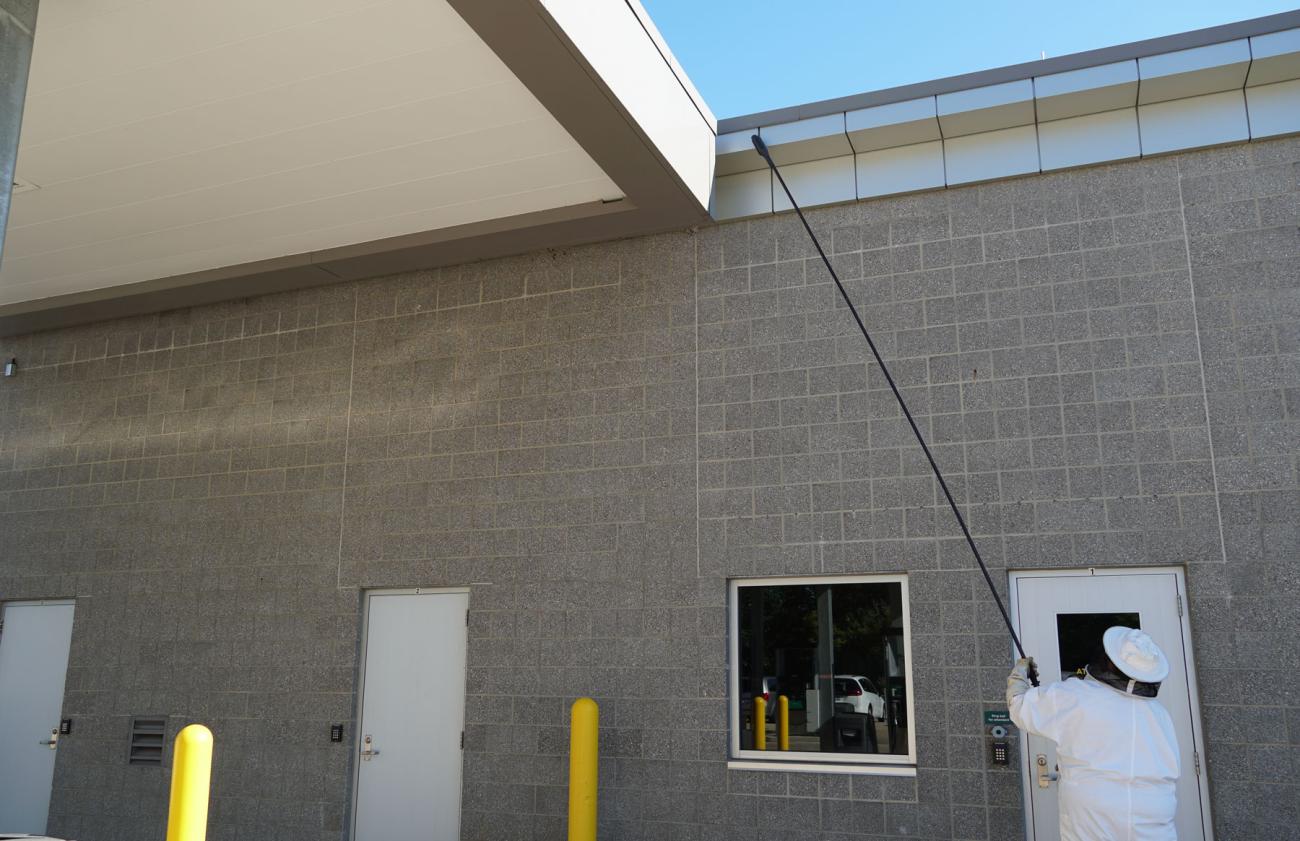
Education is a large part of his job on the Pest Control team, says Barlow. “It’s all about the right tool for the right job,” he says. “A customer might call and say ‘just spray for this.’ There’s no reason to use a pesticide if it’s not needed, but customers need to feel informed and know that they’re heard. We take their concerns very seriously.”
The team also works with experts on campus to identify new invasive pest species that appear on campus.
“I started to notice a new species of bug on campus about two years ago,” explains Barlow. “I worked with Howard Russell in the Department of Entomology to identify them.” The insects, elm seed bugs, are native to Europe and although they aren’t dangerous to people, they can be a nuisance when they enter buildings.
The life of a Pest Control professional on campus isn’t all insects and nests and hives, though. Sometimes the team will get a call that’s unlike anything they’ve dealt with before.
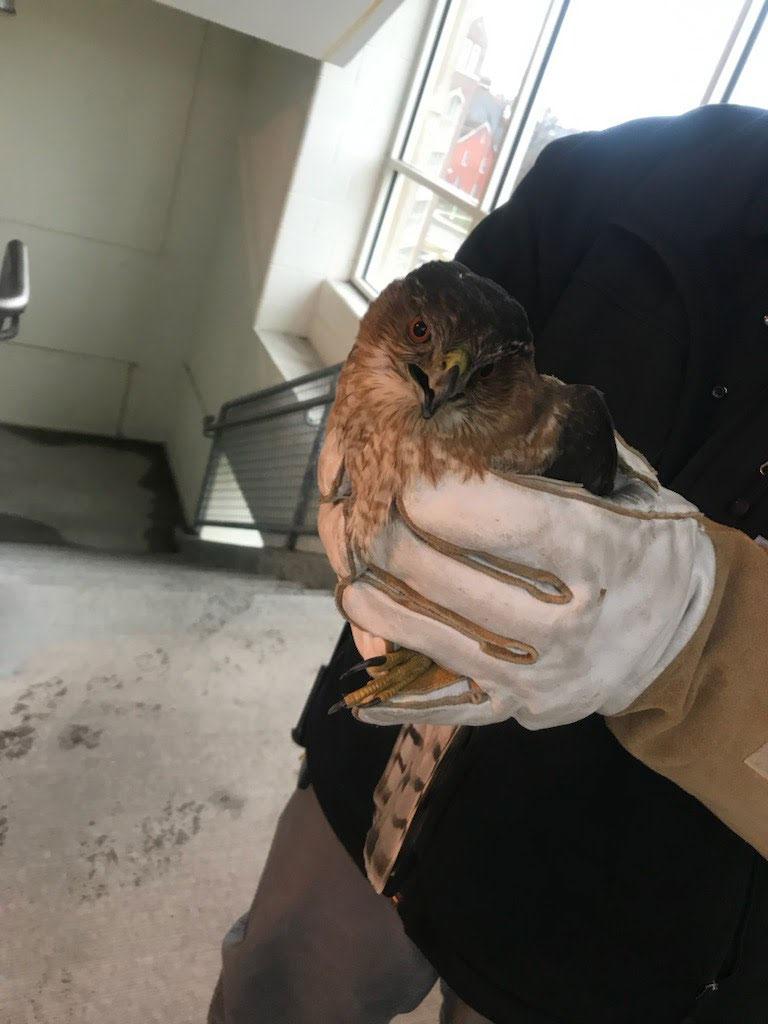
“I had to save Pickles [the peregrine falcon] twice,” says Barlow, laughing. “When the chicks were just learning to fly it got really windy, and I think Pickles wasn’t quite ready to fly yet and got swept up and carried off.”
Barlow collected the falcon chick, and after making sure it was uninjured, returned it to its nesting box on top of Spartan Stadium.
“Two weeks later I got a call that there was a falcon in a cardboard recycling dumpster by the STEM Building,” continues Barlow. “I looked in there and he’s just sitting there, and I go, ‘Are you kidding me? It’s the same one I caught last week.’”
Pickles the falcon, found later with a broken wing, underwent surgery and now lives at the Wildside Rehabilitation and Education Center. “I went there the same day he arrived to drop off two baby nighthawks. I’m glad he’s there, I’m not sure he was cut out for life in the wild,” laughs Barlow.
Check out a few of Barlow’s pictures below. To request the services of IPF’s Pest Control team, visit the IPF website.
